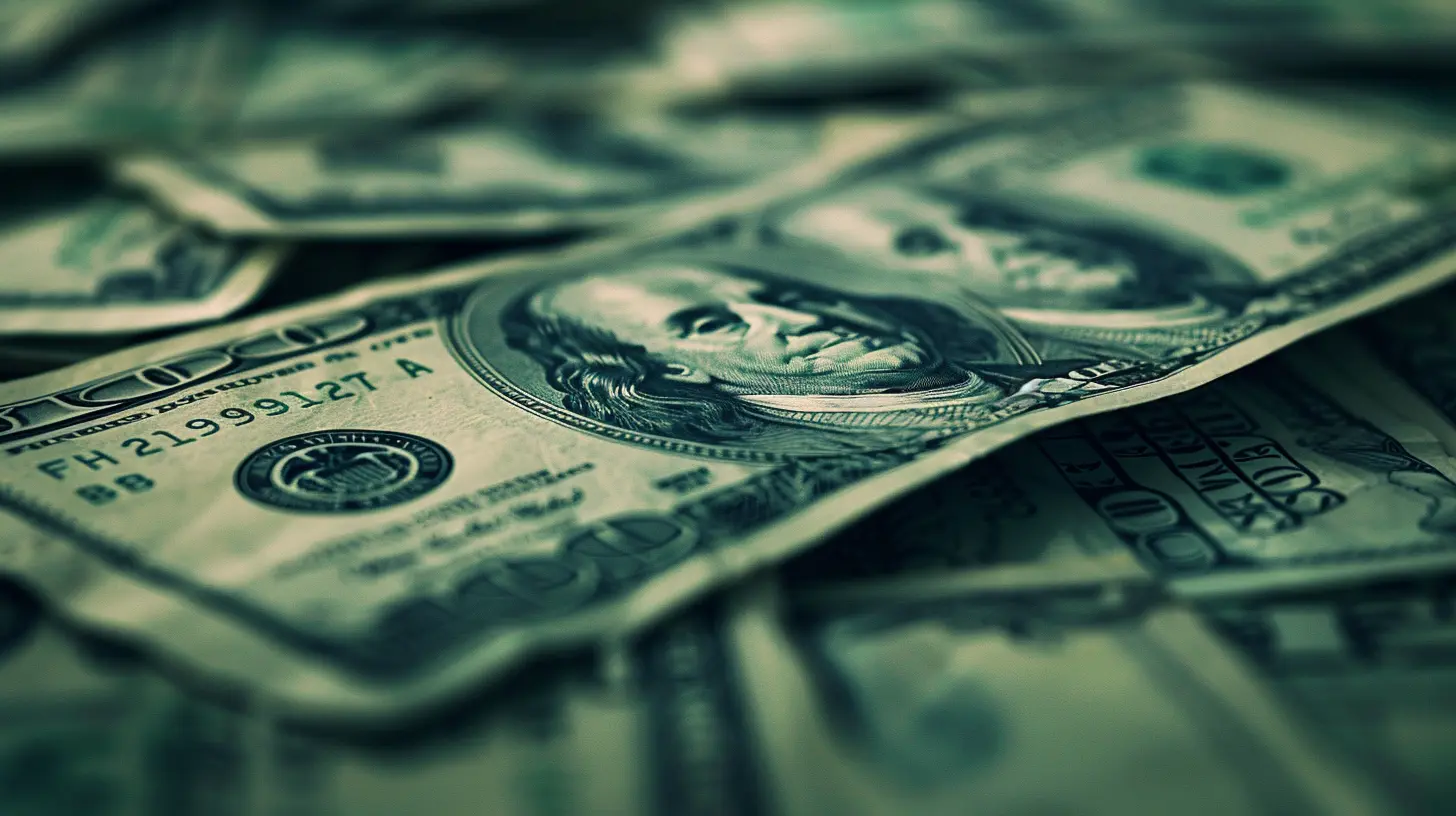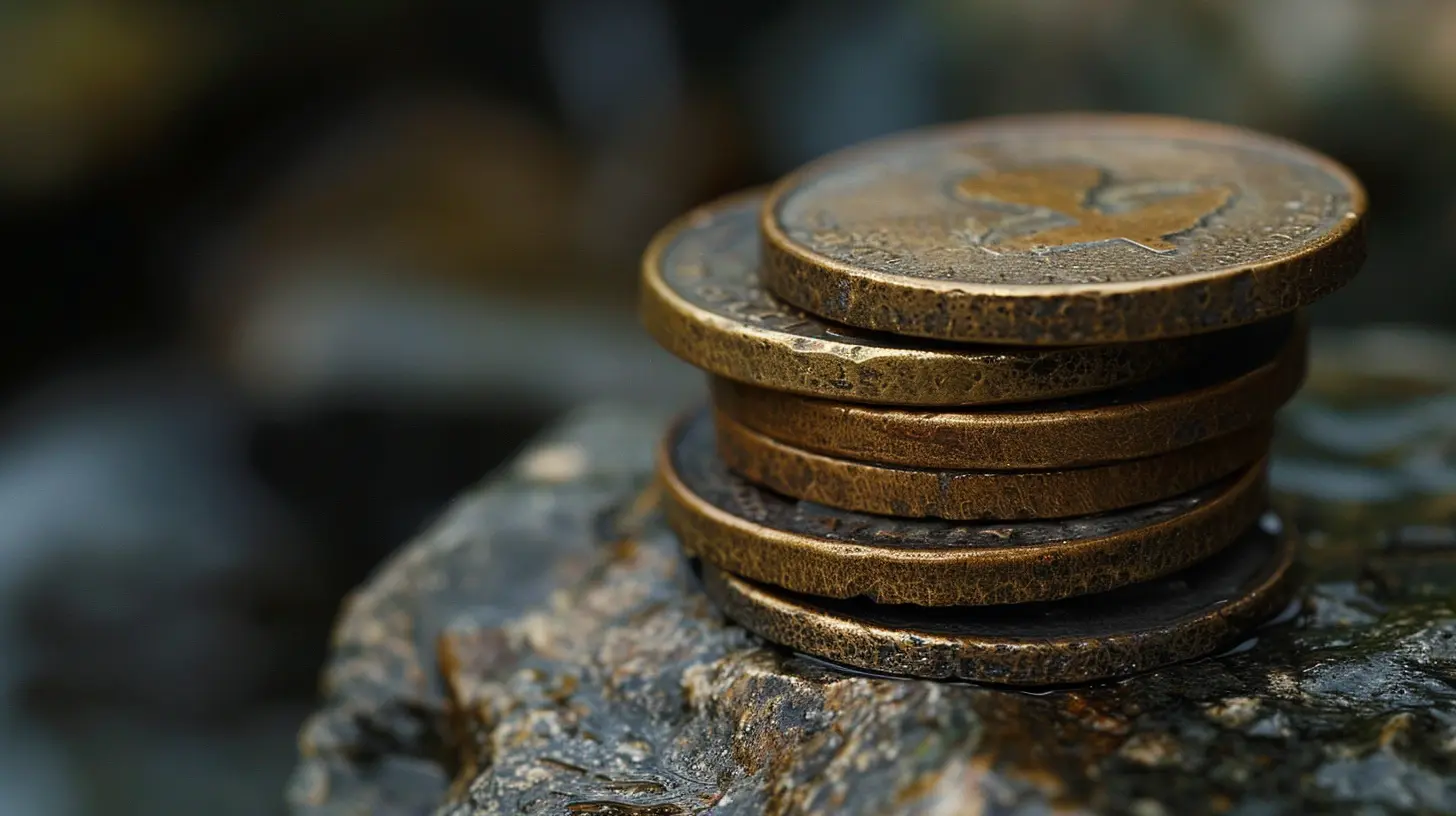Income From Dividends: A Study of Compound Interest
4 December 2024
When it comes to making money, who doesn’t dream of a setup where their money works for them, even while they sleep? That dream isn’t as far-fetched as it sounds, especially when we talk about earning income from dividends and the magical effect of compound interest. Whether you're new to investing or a seasoned pro looking to optimize your portfolio, the combination of dividends and compounding can be a game-changer.
But before we dive headfirst, let’s break it down. What are dividends? How does compound interest tie in? And most importantly, how can you use them together to grow your wealth? Grab your coffee, and let's explore this together in plain English.
What Are Dividends?
First things first—what exactly are dividends? Think of dividends as a company’s way of saying “thank you” for investing in them. When you own shares in a company, you're essentially a partial owner. Companies often distribute a portion of their profits back to shareholders in the form of dividends. It’s like getting a bonus just for holding onto their stock—sounds great, right?Dividends can be paid out quarterly, annually, or even monthly, depending on the company. They’re typically issued in cash (directly into your brokerage account) or additional shares of stock. Either way, they represent real, tangible income that can help you grow your wealth over time.
What Is Compound Interest and Why Is It So Powerful?
Now, let’s talk about the superstar in this equation: compound interest. In simple terms, compound interest is like interest that builds on itself. It’s the process of earning interest not just on your original investment (the principal) but also on the interest that accumulates over time.Imagine this: You plant a money tree in your backyard. Initially, it grows a few dollars (interest) here and there. But as time goes on, those dollars start to multiply because they, too, begin to grow more dollars. Eventually, you’re looking at an ever-expanding forest of money trees—and all you did was give it time and the right conditions.
Albert Einstein famously called compound interest the “eighth wonder of the world,” and for a good reason. The longer you let it work its magic, the more exponential your returns become.
How Dividends and Compound Interest Work Together
So, where do dividends fit into this picture? Dividends and compound interest are like peanut butter and jelly—they work ridiculously well together. Here’s how:When you receive dividends from your investments, you have two choices: you can either take that cash and spend it, or you can reinvest it. If you choose to reinvest, those dividends buy more shares of the stock, which then earn additional dividends in the future. This creates a snowball effect, where your wealth grows larger and larger as the dividends and the power of compounding work in harmony.
It’s like rolling a small snowball down a hill. At first, it’s tiny and unimpressive, but as it gathers more snow (dividends), it gets bigger and starts accelerating (compound growth). The result? A massive, unstoppable avalanche of wealth over time.
The Beauty of Reinvesting Your Dividends
Here’s the kicker: reinvesting dividends turns your investments into a compounding machine. By reinvesting, you’re giving every dollar in dividends a job—to earn even more money for you. Over time, the effects can be jaw-dropping.Let’s consider an example. Suppose you invest $10,000 in a dividend-paying stock that offers a 4% annual yield. If you were to take the dividends as cash each year, you’d earn $400 annually. Not bad, right?
But what if you reinvested those dividends instead? Thanks to compounding, your investment grows faster. By the end of 20 or 30 years, you could be looking at a significantly larger nest egg—all without adding any extra money of your own. That’s the magic of compounding dividends.
Long-Term Investing: The Secret Ingredient
Here’s where many people get it wrong—compounding takes time. If you’re looking to double your money overnight, this strategy isn’t for you. But if you’re patient, the rewards can be life-changing.Think about it like growing a tree. You don’t plant a seed today and expect a giant oak tomorrow. It takes years of consistent watering and sunlight to see real growth. The same goes for dividends and compound interest. Stick with it, and your patience will be rewarded.
Dividend Stock Selection: What to Look For
Not all dividend-paying stocks are created equal. If you want to maximize your income and accelerate compound growth, you’ll need to choose wisely. Here are a few things to keep in mind:1. Dividend Yield
The dividend yield shows how much you’ll earn in dividends annually as a percentage of your investment. For example, if a stock has a 4% yield, you’ll earn $4 annually for every $100 you invest. A higher yield can mean higher income, but be cautious—an extremely high yield may signal trouble for the company.2. Dividend Growth
Look for companies with a strong history of increasing their dividends each year. This shows that the company is financially stable and committed to rewarding shareholders. Firms like these can supercharge your compounding strategy over time.3. Payout Ratio
The payout ratio measures how much of a company’s earnings are paid out as dividends. A lower payout ratio means the company has room to grow its dividend in the future, which is great news for long-term investors.4. Blue-Chip Companies
Blue-chip companies have established reputations, consistent earnings, and strong dividend policies. Think of them as the reliable workhorses of your portfolio—steady and unlikely to let you down.The Risks You Should Know About
Let’s be real—no investment is without risk. While dividends and compound interest are a powerful duo, there are a few pitfalls to watch out for:1. Market Fluctuations: Stock prices go up and down, which can affect the value of your investments.
2. Dividend Cuts: Companies aren’t obligated to pay dividends. If profits dip, dividends could be reduced or eliminated altogether.
3. Inflation: Over time, inflation can eat into the purchasing power of both your dividends and your total returns.
The key to mitigating these risks? Diversification and staying informed. By spreading your investments across various sectors and staying up to date about the companies you invest in, you’ll be better equipped to handle the ups and downs.
The Tax Side of Things
Let’s not forget taxes. Depending on where you live, dividend income may be taxed at a higher rate than capital gains. However, in some countries, qualified dividends are taxed at a lower rate, which can make them an attractive source of income.To make the most of your dividend income, consult a tax advisor or financial planner who can help you navigate the tax implications and optimize your strategy.
Why You Should Start Now
You’ve probably heard the old adage, “The best time to plant a tree was 20 years ago. The second-best time is now.” The same logic applies to investing in dividends and harnessing compound interest. The sooner you start, the more time you give your investments to grow.Don’t let analysis paralysis keep you on the sidelines. Even small, consistent investments can add up over time. Start with what you can afford and let compound interest and dividends do their thing.
Wrapping Up
Income from dividends combined with the power of compound interest is a winning formula for building wealth over the long term. It’s not flashy, and it won’t turn you into an overnight millionaire, but it’s one of the most reliable ways to grow your money while letting time do the heavy lifting.Think of it as planting seeds for your financial future. Water them with consistent investments, provide sunlight by reinvesting dividends, and give them time to grow. Before you know it, you might just have a money tree—or better yet, a forest.
all images in this post were generated using AI tools
Category:
Dividend InvestingAuthor:

Audrey Bellamy
Discussion
rate this article
19 comments
Fern Henderson
Fascinating! How does compounding enhance dividend income growth?
February 9, 2025 at 3:39 AM

Audrey Bellamy
Compounding enhances dividend income growth by reinvesting dividends, allowing you to earn returns on both your initial investment and the dividends received. This creates a snowball effect, increasing your overall income over time.
Chloe McDowney
This article brilliantly highlights the power of compound interest in building wealth through dividend income. It's a must-read for anyone looking to enhance their investment strategy. Understanding how reinvestment can amplify returns over time is key to achieving financial freedom. Great insights!
February 5, 2025 at 4:40 AM

Audrey Bellamy
Thank you for your kind words! I'm glad you found the article valuable in understanding the impact of compound interest and dividend reinvestment on wealth-building.
Alexia McKibben
Thank you for sharing this insightful article! Understanding the power of compound interest through dividends can truly transform our financial futures. Great read!
February 2, 2025 at 12:16 PM

Audrey Bellamy
Thank you for your kind words! I'm glad you found the article insightful and valuable for your financial journey.
Velvet Romero
Great insights! This article effectively highlights the power of compound interest in generating dividend income. Understanding this relationship is crucial for investors looking to maximize their returns over time. Well done!
January 31, 2025 at 11:46 AM

Audrey Bellamy
Thank you for your kind words! I'm glad you found the insights on compound interest and dividend income valuable. Happy investing!
Mistral Yates
Embrace the power of dividends! Small investments today can lead to incredible wealth through compounding.
January 27, 2025 at 12:45 PM

Audrey Bellamy
Absolutely! Dividends and compounding together can significantly enhance wealth over time. It's a powerful strategy for long-term financial growth!
Vaughn Wilcox
Great insights! Understanding the power of compound interest through dividends truly highlights the importance of long-term investing. Thank you!
January 24, 2025 at 5:50 AM

Audrey Bellamy
Thank you for your kind words! I'm glad you found the insights on compound interest and long-term investing valuable.
Theodore McClure
Exploring compound interest on dividend income reveals powerful wealth-building potential over time.
January 21, 2025 at 4:50 AM

Audrey Bellamy
Absolutely! Compound interest on dividend income can significantly enhance wealth accumulation, making it a crucial strategy for long-term investors.
Darby Maddox
Dividends are more than just numbers on a spreadsheet; they are whispers of financial freedom hidden in the shadows of compound interest. This study unveils the untold potential of your money multiplying quietly behind the scenes. Will you dare to unlock the secrets and watch your wealth bloom?
January 18, 2025 at 5:20 AM

Audrey Bellamy
Thank you for your insightful comment! Indeed, dividends and compound interest work together to create a powerful path to financial independence. Unlocking this potential can truly transform one's financial future.
Drew Horne
Compounding boosts dividend gains!
January 11, 2025 at 4:10 AM

Audrey Bellamy
Absolutely! Compounding significantly enhances dividend earnings over time, maximizing your investment's potential.
Tempra McMaster
Great insights on compound growth!
January 6, 2025 at 4:15 AM

Audrey Bellamy
Thank you! I'm glad you found it valuable!
Elidi Harris
Embracing the power of compound interest through dividend income is a smart financial strategy! Every small investment today can lead to significant wealth tomorrow. Start planting those seeds for your financial future!
December 30, 2024 at 10:00 PM

Audrey Bellamy
Thank you! You're absolutely right—compound interest and dividend income are key to building long-term wealth. Every small investment truly does count!
Remi Cox
This article effectively highlights the power of compound interest in generating income from dividends. It provides a clear understanding of how reinvesting dividends can significantly enhance returns over time. A great read for investors looking to maximize their portfolio's growth potential through strategic dividend management!
December 25, 2024 at 2:00 PM

Audrey Bellamy
Thank you for your insightful comment! I'm glad to hear the article resonated with you and provided valuable insights on the benefits of compound interest and dividend reinvestment. Happy investing!
Fenris Carter
Dividends + compound interest = the ultimate money power couple! If you’re not cashing in on this dynamic duo, are you even serious about your financial future? Time to wake up and let your money work harder than you do! 💸✨ #InvestSmart
December 21, 2024 at 8:27 PM

Audrey Bellamy
Absolutely! Dividends and compound interest are powerful tools for building wealth. Don't underestimate their potential—start investing wisely today! 💪💰
Finnian Hardy
This article succinctly breaks down the power of dividend income and compound interest. It’s a compelling reminder of how reinvesting dividends can significantly enhance wealth over time. A must-read for any investor!
December 18, 2024 at 8:37 PM

Audrey Bellamy
Thank you for your insightful comment! I'm glad you found the article helpful in highlighting the importance of dividend reinvestment and compound interest for building wealth. Happy investing!
Lana Hines
This article succinctly highlights the power of compound interest in generating income from dividends. It's a great reminder of how consistent investing can significantly enhance long-term financial growth.
December 15, 2024 at 8:25 PM

Audrey Bellamy
Thank you for your insightful comment! I'm glad you found the article helpful in highlighting the impact of compound interest on dividend income and long-term growth.
Nala Sanders
Dividends illustrate the magic of compounding, turning patience into profound wealth.
December 13, 2024 at 4:05 AM

Audrey Bellamy
Thank you! Indeed, dividends and compounding work together to create significant wealth over time, highlighting the importance of patience in investing.
Freya Cain
This article effectively highlights the power of dividends and compound interest in building wealth over time. While emphasizing their benefits, it could also acknowledge potential risks and market volatility, providing a more comprehensive view for investors.
December 6, 2024 at 3:40 AM

Audrey Bellamy
Thank you for your feedback! I appreciate your suggestion to include a discussion on risks and market volatility to provide a more balanced perspective for readers.
Damian Harmon
Compounding is like magic for your money—abracadabra, watch those dividends grow!
December 5, 2024 at 3:53 AM

Audrey Bellamy
Absolutely! Compounding truly transforms the power of dividends, turning steady growth into remarkable wealth over time.
Starling McCool
Compound interest makes money fun!
December 4, 2024 at 5:58 AM

Audrey Bellamy
Absolutely! Compound interest indeed transforms savings into a rewarding journey over time.
MORE POSTS

How Credit Counseling Organizations Negotiate with Creditors

Estate Planning for Blended Families: Ensuring Fair and Equitable Inheritances

Effective Ways to Align Your Budget with Your Life Goals

The Correlation Between Gold and the U.S. Dollar Explained

Smart Strategies for Using Your Emergency Fund Wisely

Credit Counseling for Small Business Owners: What You Need to Know

The Impact of Local Government Policies on Cost of Living

The Benefits of Delaying Retirement for Financial Security

Offshore Accounts and Exchange Rate Fluctuations: Managing Risks

The Role of Central Banks in Stock Market Performance

Addressing Medical Debt Through Credit Counseling

Creating Financial Goals that Align with Your Personal Values